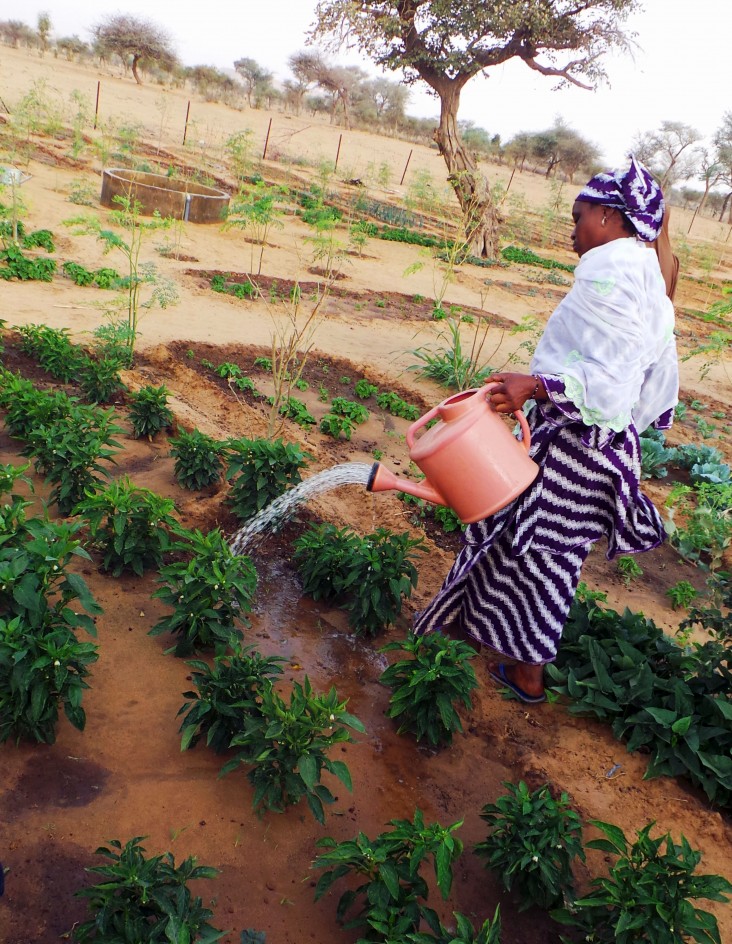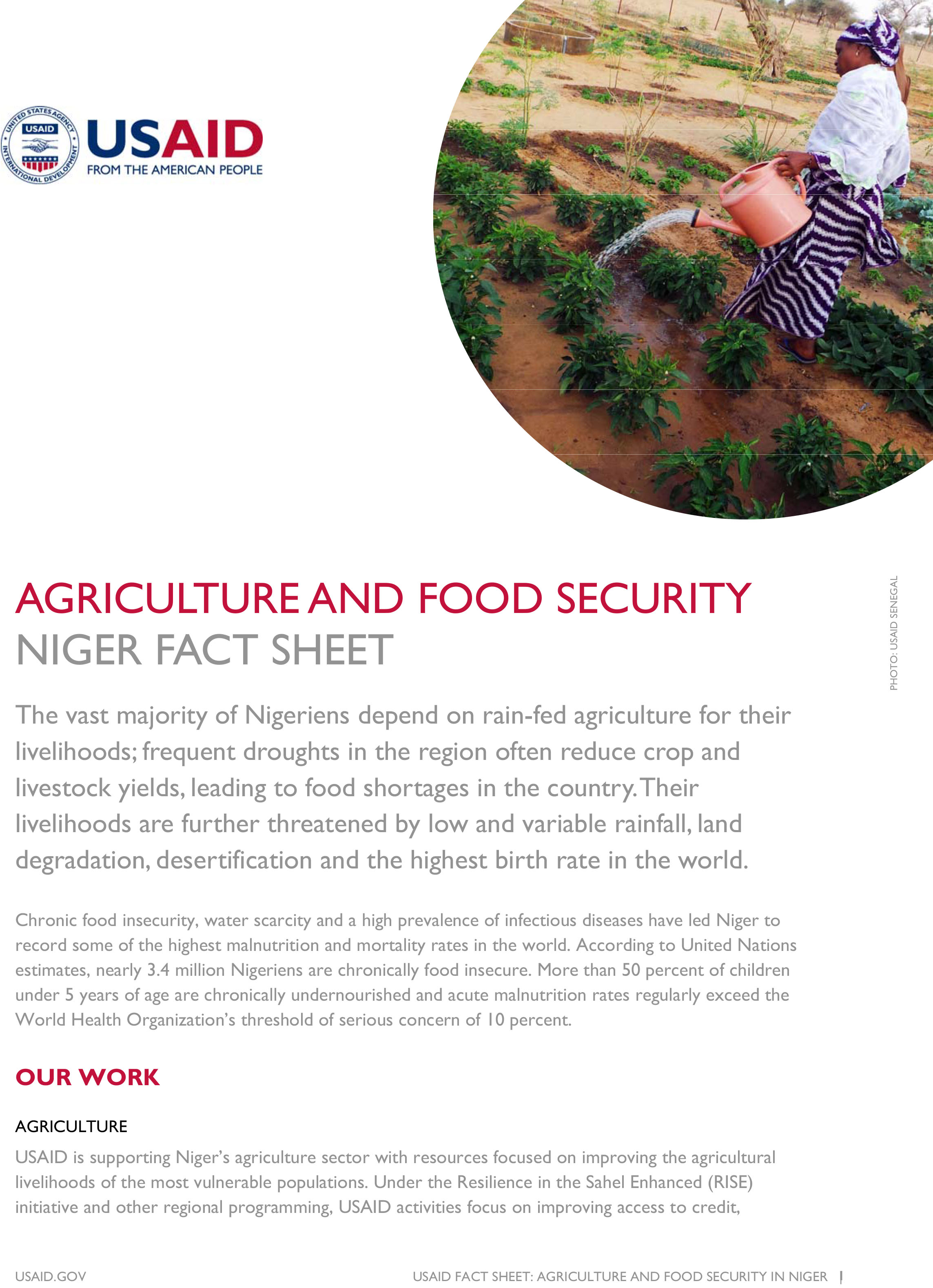
AGRICULTURE
USAID is supporting Niger’s agriculture sector with resources focused on improving the agricultural livelihoods of the most vulnerable populations. Under the Resilience in the Sahel Enhanced (RISE) initiative and other regional programming, USAID activities focus on improving access to credit, diversifying economic opportunities, and improving natural resource and soil management to foster better agricultural and animal production. In addition, USAID is working to improve the competitiveness and inclusiveness of three pro-poor value chains: cowpea, small ruminants and poultry, while strengthening the organizational capacities of farmer groups.
FOOD SECURITY
Niger Agriculture & Food Security Fact Sheet ![]() (pdf - 255k)
(pdf - 255k)
USAID is reducing food insecurity through a combination of emergency humanitarian and development assistance. Food for Peace (FFP) and the Office of U.S. Foreign Disaster Assistance (OFDA) humanitarian initiatives, in collaboration with FFP and Feed the Future development activities under the RISE initiative, comprise the key elements of the food security program in Niger. RISE uses a multi-sectoral approach to address the diverse and structural causes of chronic vulnerability by increasing sustainable livelihoods and improving health and nutrition. The RISE initiative aims to reduce food insecurity and malnutrition in rural households through activities focused on health, nutrition, water and sanitation. Finally, USAID supports a learning project that helps bring all of these efforts together by evaluating the impact of RISE projects, promoting collaboration and facilitating learning in order to better guide resilience interventions in the Sahel.
USAID Niger Agriculture and Food Security Goals
- Reduced malnutrition in targeted areas
- Reduced vulnerability and need for humanitarian assistance
- Reduced food insecurity through increased food and water availability, increased purchasing power of targeted households and improved livelihoods
- Improved productivity in agriculture sector and livestock industries
- Increased representation of women in food and nutrition activities at community level









Comment
Make a general inquiry or suggest an improvement.